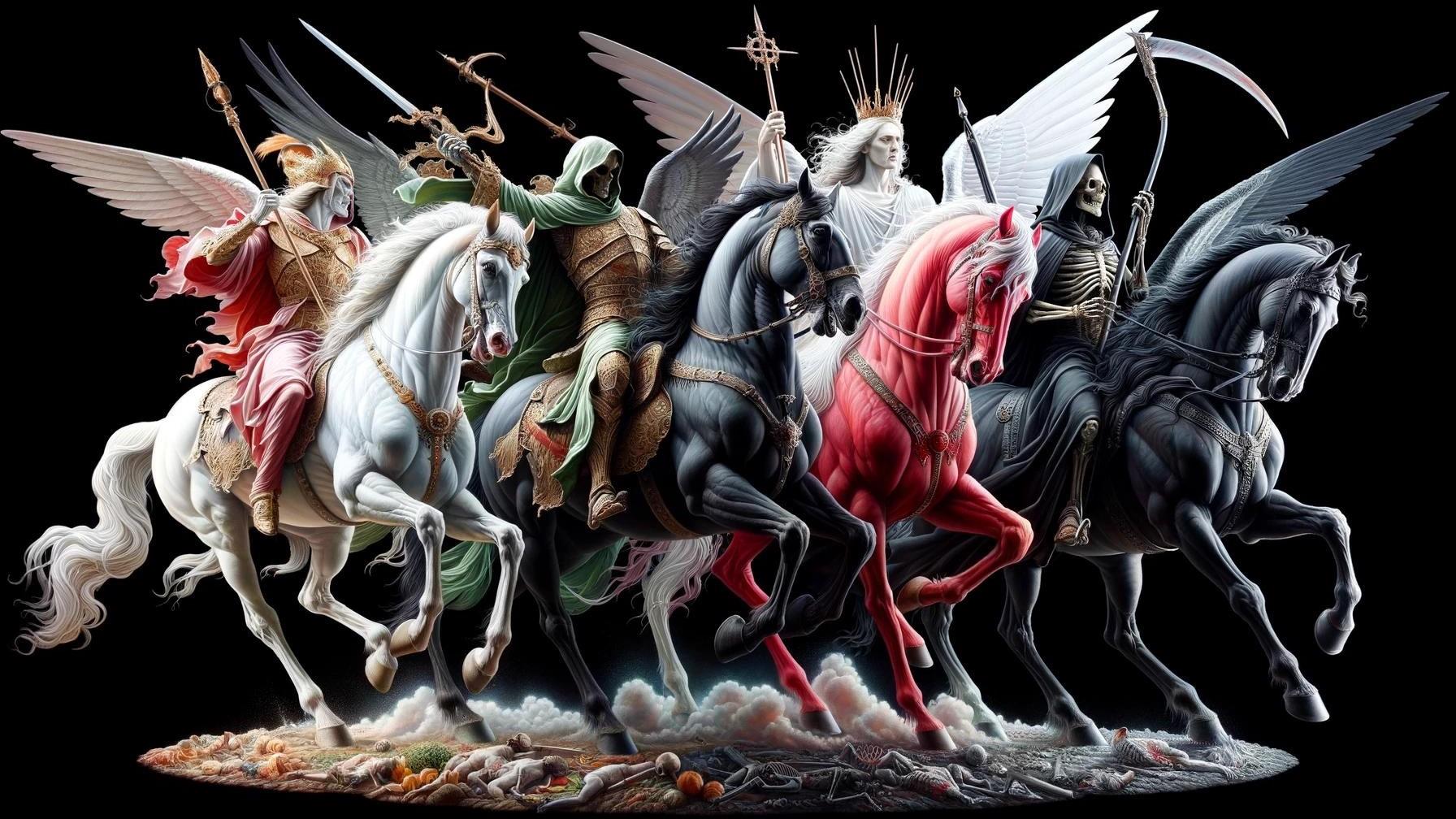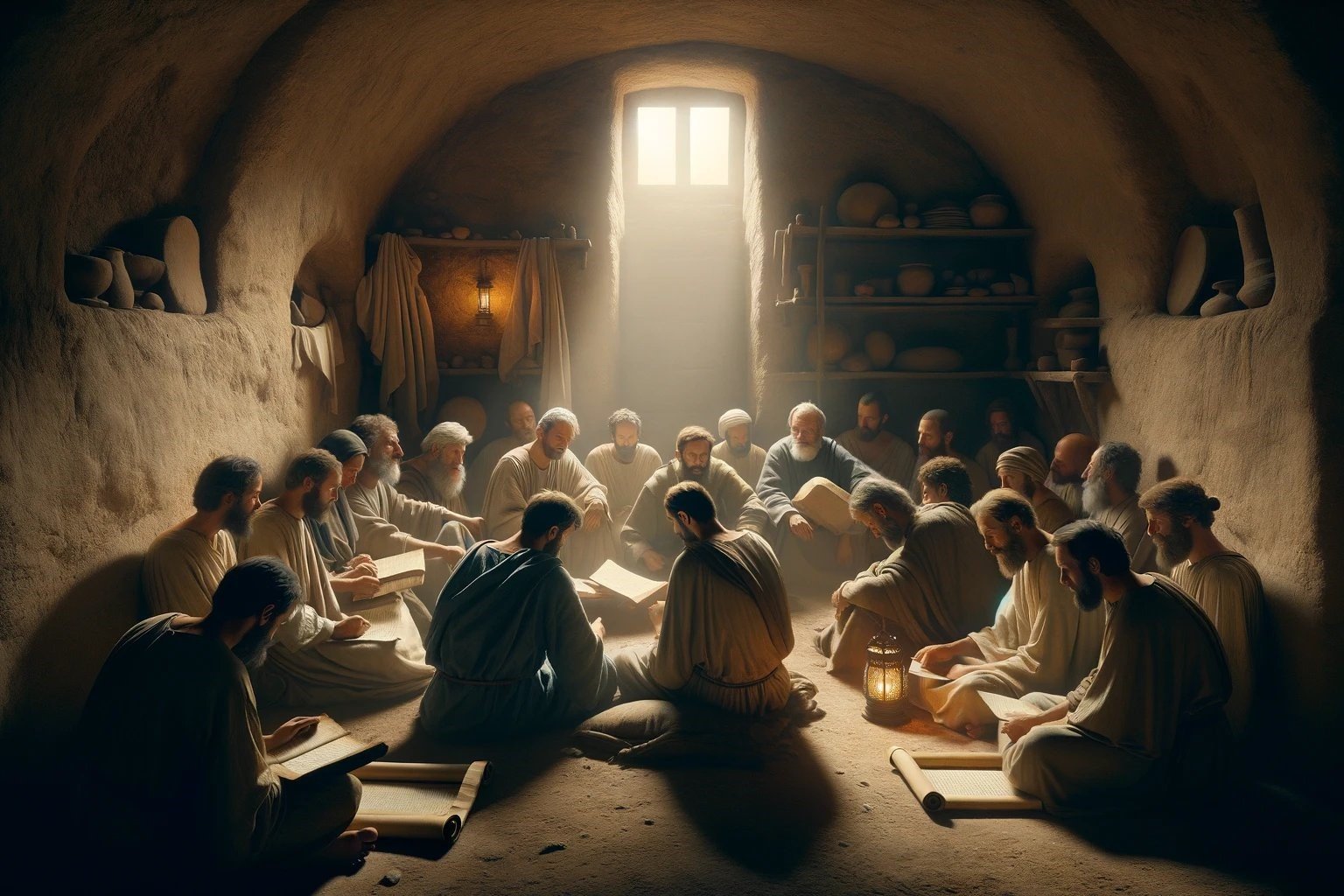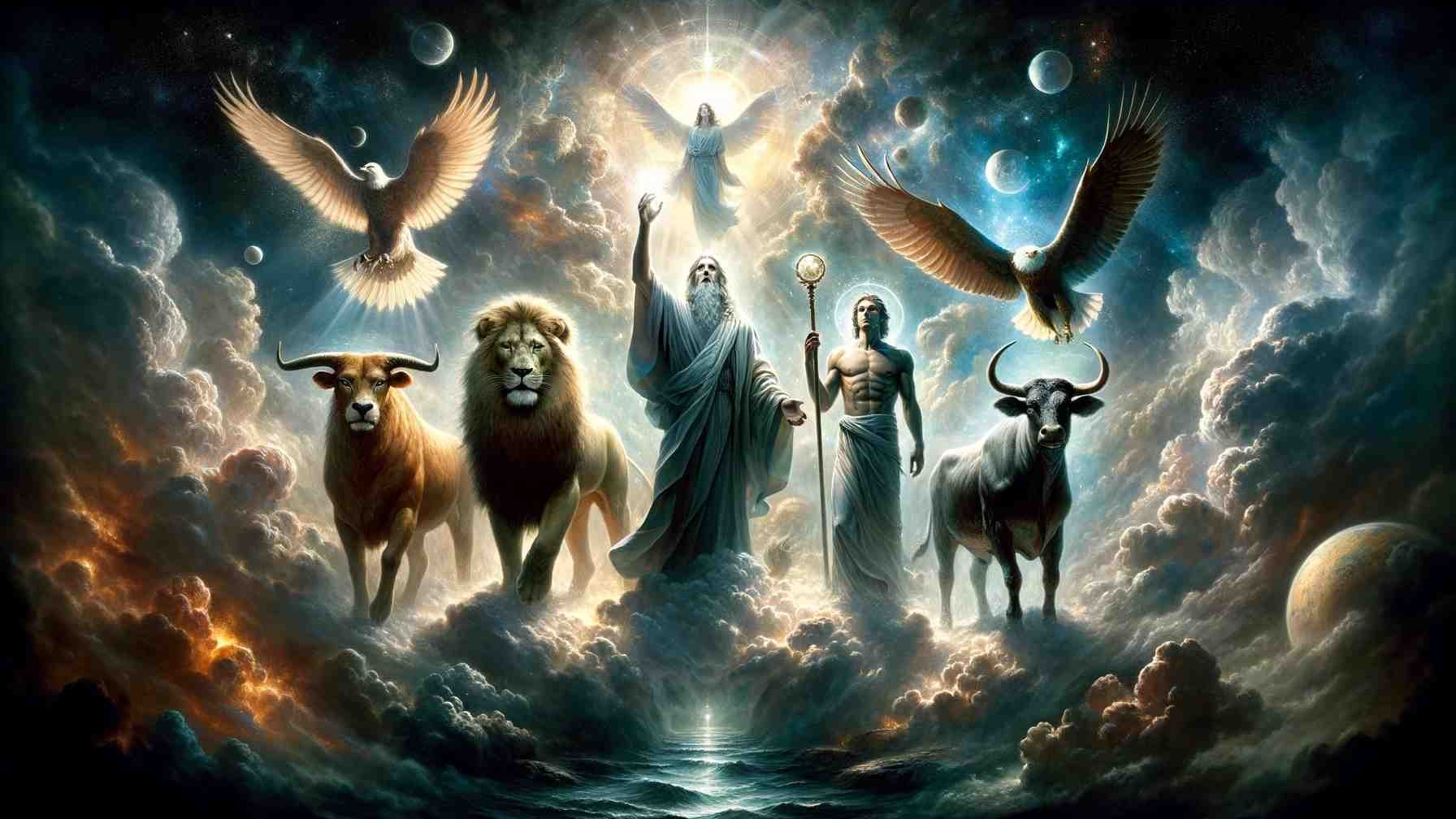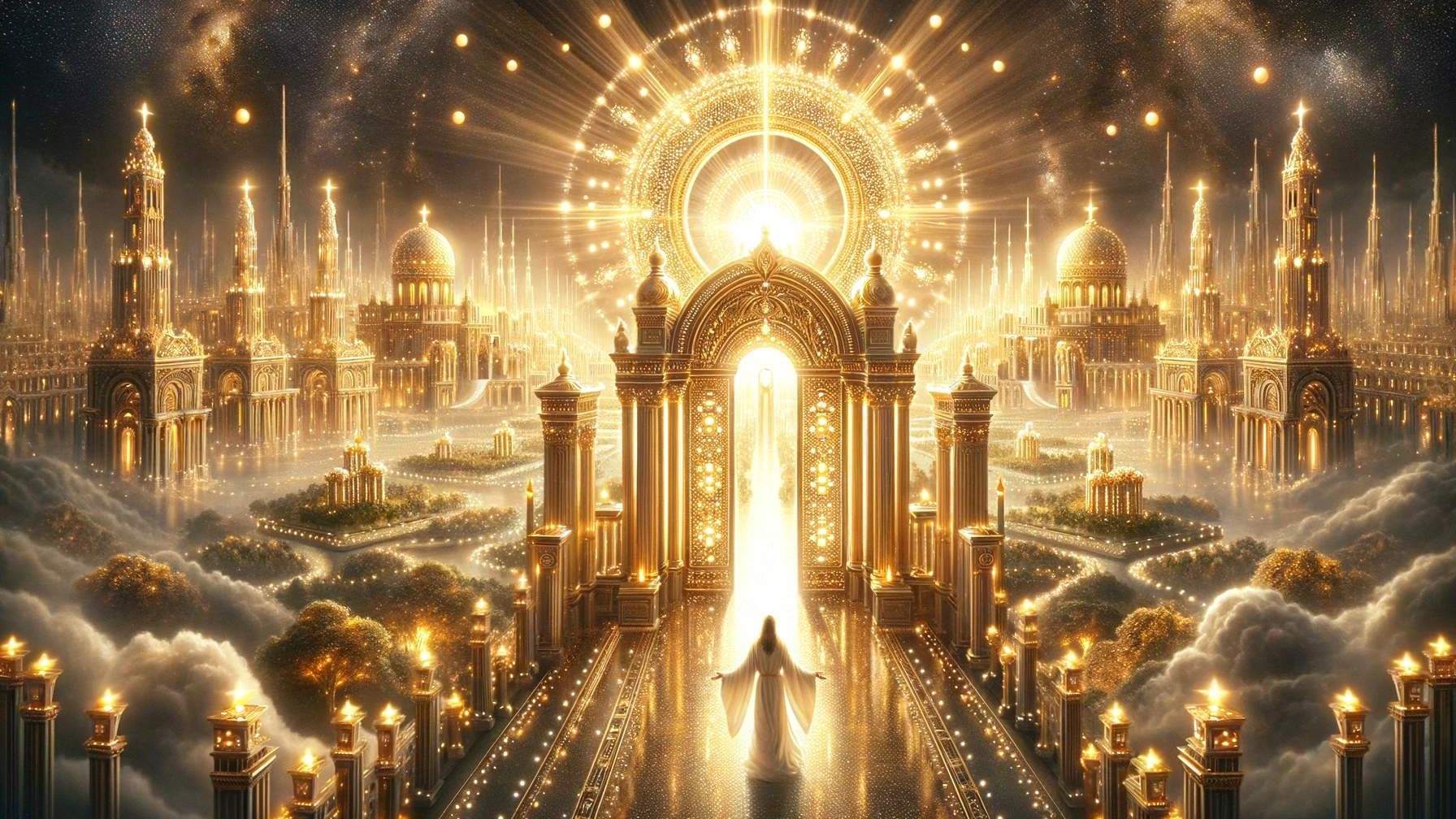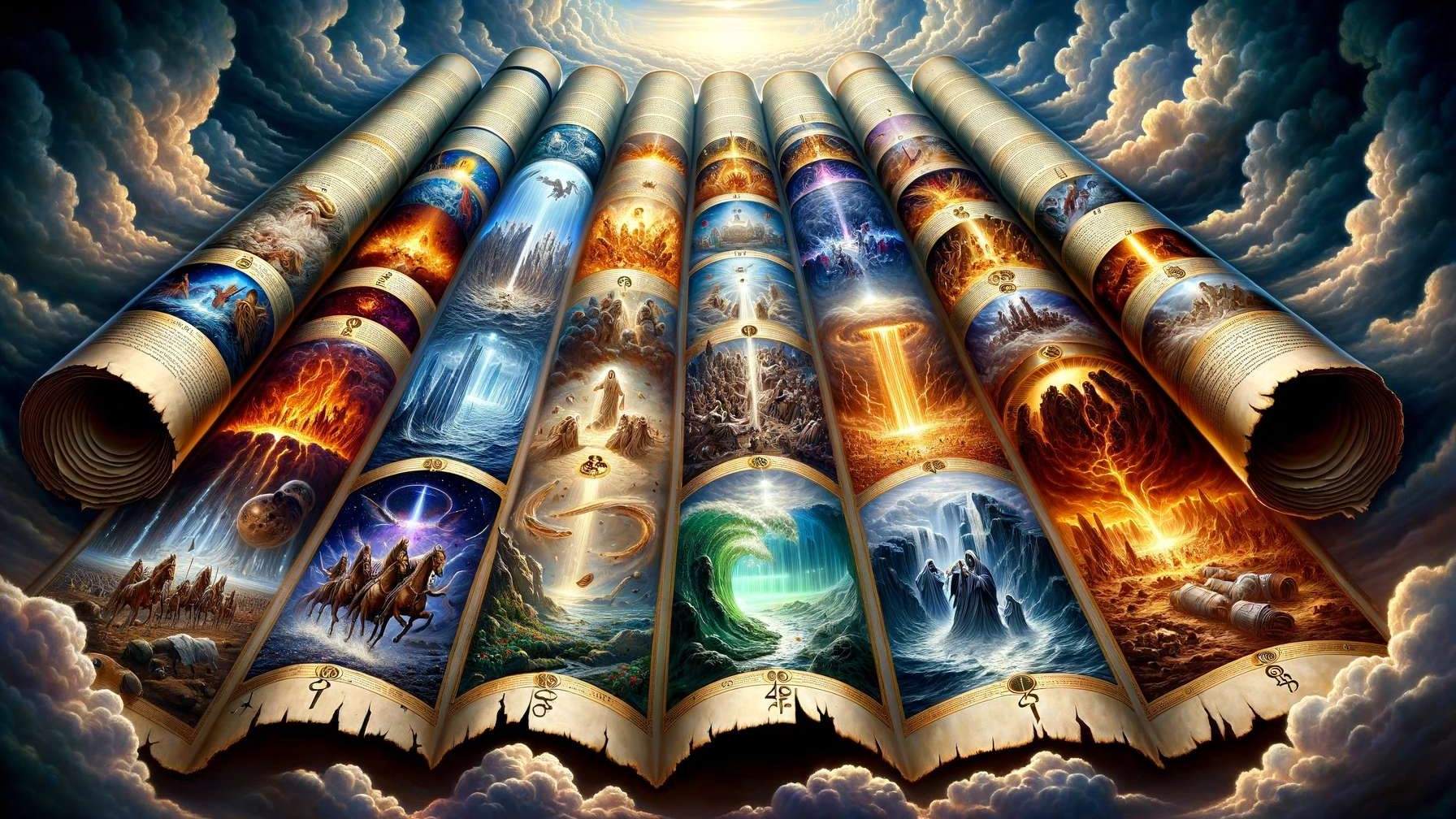Home>Bible Facts>What Is The Literary Style Of The Book Of Revelation?


Bible Facts
What Is The Literary Style Of The Book Of Revelation?
Published: February 11, 2024
Peter Smith, Editorial Director at Christian.net, combines deep insights into faith, politics, and culture to lead content creation that resonates widely. Awarded for his contributions to religious discourse, he previously headed a major organization for religious communicators, enhancing dialogue on faith's societal impacts.
Discover the literary style of the Book of Revelation and explore fascinating Bible facts. Uncover the unique characteristics of this biblical text.
(Many of the links in this article redirect to a specific reviewed product. Your purchase of these products through affiliate links helps to generate commission for Christian.net, at no extra cost. Learn more)
Table of Contents
Introduction
The Book of Revelation, the final book of the New Testament, is a captivating and enigmatic piece of literature that has intrigued and inspired readers for centuries. Also known as the Apocalypse of John, this text is renowned for its vivid imagery, prophetic language, and profound theological themes. As we delve into the literary style of the Book of Revelation, we will uncover the rich tapestry of symbolism, metaphor, and allegory that characterizes this remarkable work.
Revelation is a unique and complex example of apocalyptic literature, a genre that flourished during times of intense persecution and upheaval. Its distinctive style sets it apart from other biblical texts, as it employs symbolic language and visionary imagery to convey profound spiritual truths. The author, traditionally believed to be the apostle John, wrote during a period of Roman oppression, and his apocalyptic vision provided hope and encouragement to the early Christian communities facing persecution.
The literary style of Revelation is marked by its use of vivid and often surreal imagery, which serves to convey profound spiritual truths and cosmic realities. The text is replete with symbolic representations of heavenly beings, celestial phenomena, and eschatological events, all of which contribute to its enigmatic and captivating nature. Through its use of symbolism and imagery, Revelation invites readers into a world of mystery and wonder, where the boundaries between the earthly and the divine are blurred, and the cosmic drama of God's redemptive plan unfolds.
As we embark on a journey through the literary landscape of Revelation, we will explore the prophetic language, metaphorical richness, and theological depth that define this extraordinary work. By delving into its symbolic tapestry and unraveling its enigmatic visions, we will gain a deeper appreciation for the profound truths and timeless relevance encapsulated within its pages. Join us as we unravel the mysteries of Revelation and discover the enduring literary legacy of this remarkable biblical text.
Read more: What Is Babylon In The Book Of Revelation
Apocalyptic Literature
Apocalyptic literature, a prominent genre in ancient Jewish and Christian writings, is characterized by its visionary and revelatory nature. The Book of Revelation exemplifies this genre, drawing upon a rich tradition of apocalyptic imagery and symbolism to convey its profound message. The term "apocalypse" originates from the Greek word apokalypsis, meaning "unveiling" or "revelation," reflecting the central theme of divine disclosure and eschatological unveiling that permeates this genre.
Apocalyptic literature often emerges during periods of intense persecution, social upheaval, or political oppression, serving as a source of hope and encouragement for communities facing adversity. It offers a cosmic perspective on the struggle between good and evil, portraying the ultimate triumph of God's justice and the vindication of the righteous. The apocalyptic worldview is characterized by a dualistic understanding of the world, where the forces of light and darkness engage in a cosmic conflict that will culminate in the establishment of God's kingdom.
The literary style of apocalyptic texts is marked by its use of symbolic language, vivid imagery, and visionary symbolism. These elements serve to convey profound spiritual truths and cosmic realities, often depicting otherworldly realms, celestial beings, and eschatological events. The symbolic nature of apocalyptic literature invites readers into a realm of mystery and wonder, where the boundaries between the earthly and the divine are blurred, and the cosmic drama of God's redemptive plan unfolds.
In the context of the Book of Revelation, the apocalyptic literary style is employed to convey a message of hope, perseverance, and ultimate victory in the face of persecution and tribulation. The author's visionary experiences and symbolic visions serve to reassure and inspire the early Christian communities, offering them a glimpse into the divine plan and the ultimate triumph of God's kingdom. Through its apocalyptic imagery and symbolism, Revelation provides a cosmic perspective on the ongoing spiritual battle and the ultimate fulfillment of God's redemptive purposes.
In essence, the literary style of apocalyptic literature, as exemplified in the Book of Revelation, serves as a powerful medium for conveying profound spiritual truths and offering hope in the midst of adversity. Its visionary and symbolic nature invites readers to contemplate the cosmic dimensions of God's redemptive plan and to find assurance in the ultimate triumph of divine justice and righteousness.
Symbolism and Imagery
The Book of Revelation is renowned for its rich tapestry of symbolism and vivid imagery, which permeate the text and contribute to its enigmatic and captivating nature. Symbolism and imagery are integral to the literary style of Revelation, serving as powerful vehicles for conveying profound spiritual truths and cosmic realities.
Throughout the text, a myriad of symbols and images are employed to depict heavenly beings, celestial phenomena, and eschatological events. These symbolic representations invite readers into a world of mystery and wonder, where the boundaries between the earthly and the divine are blurred, and the cosmic drama of God's redemptive plan unfolds. From the majestic vision of the glorified Christ to the symbolic portrayal of the heavenly throne room, Revelation abounds with evocative imagery that transcends the boundaries of human language and imagination.
The use of symbolism in Revelation extends beyond mere visual imagery, encompassing a complex web of allegorical representations and metaphorical expressions. The symbolic language employed in the text serves to convey profound spiritual truths and cosmic realities, often transcending literal interpretation to evoke deeper layers of meaning. For instance, the imagery of the seven seals, seven trumpets, and seven bowls signifies completeness and divine judgment, while the symbolic portrayal of the dragon, the beast, and the harlot represents the forces of evil and opposition to God's kingdom.
Moreover, the use of vivid imagery and symbolic language in Revelation serves to evoke emotional and spiritual responses in readers, drawing them into the visionary world of the text and prompting contemplation of its profound theological themes. The symbolic portrayal of cosmic upheavals, heavenly worship, and eschatological battles creates a sense of awe and wonder, inviting readers to engage with the text on a deeper, more contemplative level.
In essence, the symbolism and imagery in the Book of Revelation constitute a vital aspect of its literary style, inviting readers into a visionary realm where profound spiritual truths are conveyed through evocative symbols and vivid imagery. The text's rich tapestry of symbolism transcends the constraints of ordinary language, drawing readers into a cosmic drama of divine revelation and redemptive fulfillment. Through its symbolic language and imagery, Revelation continues to captivate and inspire readers, inviting them to explore the depths of its visionary world and contemplate the enduring truths it conveys.
Prophetic Language
The Book of Revelation is characterized by its extensive use of prophetic language, which plays a pivotal role in shaping its literary style and conveying its profound message. Prophetic language, deeply rooted in the Old Testament prophetic tradition, serves as a powerful means of communicating divine revelation and unveiling eschatological truths. The author of Revelation employs a variety of prophetic motifs, symbols, and rhetorical devices to convey the message of God's ultimate triumph, the coming judgment, and the establishment of His kingdom.
The prophetic language in Revelation is marked by its vivid and often surreal imagery, which serves to depict cosmic upheavals, divine interventions, and eschatological events. Through the use of symbolic visions and prophetic symbolism, the author conveys a sense of urgency and imminence regarding the fulfillment of God's redemptive plan. The apocalyptic visions and prophetic utterances in Revelation serve to evoke a heightened awareness of the spiritual realities at play, compelling readers to contemplate the unfolding drama of divine judgment and redemption.
Furthermore, the prophetic language in Revelation encompasses a rich tapestry of Old Testament allusions and intertextual references, drawing upon the prophetic writings of Ezekiel, Daniel, and Zechariah, among others. This intertextuality serves to situate the apocalyptic visions of Revelation within the broader context of biblical prophecy, establishing continuity with the prophetic tradition while also presenting a visionary reinterpretation of its themes and motifs.
The prophetic language of Revelation also encompasses a sense of divine authority and urgency, as the author presents the visions and oracles as direct revelations from God. The use of prophetic pronouncements, such as the "I am the Alpha and the Omega" declarations, underscores the divine origin and authority of the apocalyptic message, emphasizing its relevance and significance for the contemporary audience.
In essence, the prophetic language of Revelation serves as a powerful and evocative means of conveying the message of divine judgment, redemption, and the ultimate triumph of God's kingdom. Through its prophetic motifs, symbols, and visionary language, Revelation invites readers into a world of cosmic significance and spiritual urgency, compelling them to contemplate the unfolding drama of divine revelation and the enduring relevance of its prophetic message.
Use of Metaphor and Allegory
The Book of Revelation employs a rich tapestry of metaphor and allegory to convey its profound theological themes and eschatological vision. Metaphor and allegory are integral to the literary style of Revelation, serving as powerful vehicles for conveying complex spiritual truths and cosmic realities.
Throughout the text, the author utilizes metaphorical language to depict profound spiritual concepts and cosmic phenomena. The use of metaphors such as the Lamb, the Bride, and the New Jerusalem serves to evoke deeper layers of meaning, transcending literal interpretation to convey the spiritual significance of these symbols. For example, the metaphor of the Lamb, representing Christ, conveys the sacrificial and redemptive nature of His mission, while the imagery of the Bride symbolizes the intimate and eschatological union between Christ and His people. These metaphors infuse the text with profound theological depth, inviting readers to contemplate the spiritual realities they represent.
In addition to metaphor, the Book of Revelation employs allegorical language to depict cosmic conflicts, spiritual truths, and eschatological events. The allegorical portrayal of the dragon, the beast, and the harlot represents the forces of evil and opposition to God's kingdom, conveying the ongoing spiritual battle between light and darkness. Furthermore, the allegorical imagery of the heavenly throne room and the celestial worship underscores the cosmic dimensions of divine sovereignty and the eschatological fulfillment of God's redemptive purposes.
The use of metaphor and allegory in Revelation serves to create a vivid and evocative narrative that transcends the constraints of ordinary language, drawing readers into a visionary realm of profound spiritual truths and cosmic significance. Through its metaphorical richness and allegorical depth, Revelation invites readers to engage with its theological themes on a deeper, more contemplative level, prompting reflection on the enduring truths it conveys.
In essence, the use of metaphor and allegory in the Book of Revelation constitutes a vital aspect of its literary style, infusing the text with profound theological depth and inviting readers to explore the spiritual and cosmic dimensions of its visionary world.
Theological Themes
The Book of Revelation encompasses a rich tapestry of theological themes that resonate throughout its visionary narrative. At the heart of its theological vision lies the profound affirmation of God's sovereignty and the ultimate triumph of His kingdom. The text portrays the cosmic drama of divine judgment and redemption, depicting the ongoing spiritual battle between the forces of light and darkness. Through its vivid imagery and prophetic language, Revelation conveys a sense of spiritual urgency and imminence, compelling readers to contemplate the unfolding drama of divine revelation and the enduring relevance of its theological message.
Central to the theological themes of Revelation is the concept of eschatological fulfillment, which encompasses the ultimate consummation of God's redemptive purposes and the establishment of His eternal kingdom. The text presents a vision of the new heaven and the new earth, symbolizing the renewal and restoration of all creation in the divine order. This eschatological hope serves as a source of encouragement and assurance for the faithful, inspiring them to persevere in the face of persecution and tribulation.
Furthermore, the Book of Revelation conveys a profound theology of worship, depicting the heavenly chorus and celestial worship that exalt the majesty and sovereignty of God. The text invites readers to participate in the heavenly worship, acknowledging the divine sovereignty and offering praise and adoration to the Lamb who was slain. This theological motif underscores the cosmic dimensions of worship and the eschatological fulfillment of God's redemptive plan, inviting readers to engage in a deeper understanding of the spiritual realities at play.
Moreover, Revelation presents a theology of divine justice and judgment, portraying the ultimate vindication of the righteous and the defeat of evil. The text conveys a sense of divine retribution and the fulfillment of God's righteous judgment, offering hope to those who endure persecution and oppression. Through its theological portrayal of divine justice, Revelation provides assurance of the ultimate triumph of righteousness and the establishment of God's eternal reign.
In essence, the Book of Revelation encapsulates a profound theology of eschatological hope, worship, divine justice, and the ultimate triumph of God's kingdom. Its theological themes continue to inspire and challenge readers, inviting them to contemplate the cosmic dimensions of divine revelation and the enduring relevance of its theological message.
Conclusion
In conclusion, the Book of Revelation stands as a remarkable testament to the enduring power of apocalyptic literature and the profound theological vision it embodies. Through its rich tapestry of symbolism, vivid imagery, prophetic language, and theological themes, Revelation invites readers into a visionary realm where the cosmic drama of divine revelation unfolds. The literary style of Revelation, characterized by its enigmatic and captivating nature, continues to captivate and inspire readers, inviting them to explore the depths of its visionary world and contemplate the enduring truths it conveys.
The apocalyptic literary style of Revelation, rooted in a tradition of visionary and revelatory literature, serves as a powerful medium for conveying profound spiritual truths and offering hope in the midst of adversity. Its symbolic language and vivid imagery transcend the constraints of ordinary language, drawing readers into a cosmic drama of divine revelation and redemptive fulfillment. The use of metaphor, allegory, and prophetic language creates a vivid and evocative narrative that prompts reflection on the enduring theological themes it conveys.
Furthermore, the theological themes of Revelation, encompassing eschatological hope, worship, divine justice, and the ultimate triumph of God's kingdom, continue to resonate with readers across diverse cultural and historical contexts. The text's portrayal of the cosmic drama of divine judgment and redemption offers assurance and encouragement to those facing persecution and tribulation, inspiring them to persevere in the hope of eschatological fulfillment.
In essence, the Book of Revelation stands as a timeless literary and theological masterpiece, inviting readers to contemplate the cosmic dimensions of divine revelation and the enduring relevance of its prophetic message. Its enigmatic and captivating literary style, infused with profound symbolism, vivid imagery, and theological depth, continues to captivate and inspire readers, inviting them to embark on a journey through its visionary world and discover the enduring legacy of its profound message.






